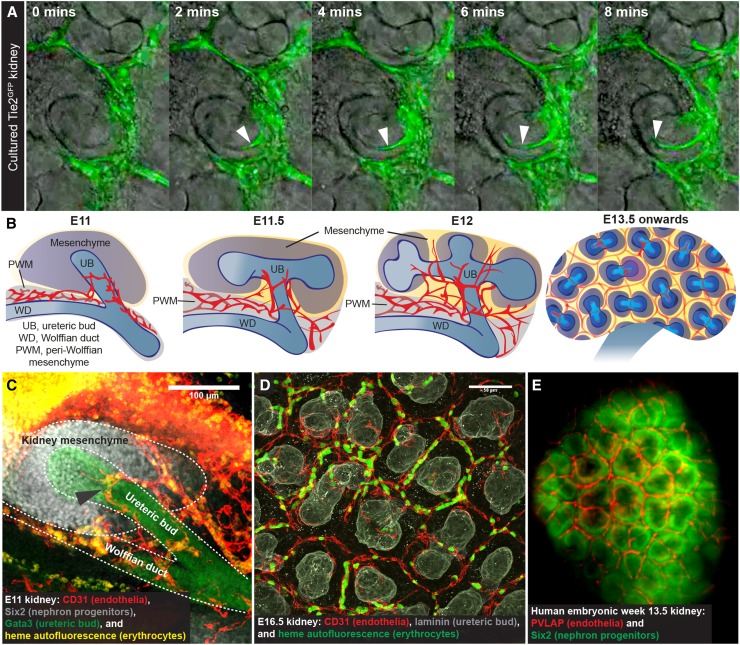Figure 1.
Evidence for the “angiogenesis-only” hypothesis in kidney vascularization. (A) Earliest glomerular endothelia forming into the cleft of an S-shaped nephron from preexisting vessels in time-lapse culture (white arrowheads). Modified from ref. 5, with permission. (B) Model of early kidney vascularization in vivo. Some argue that the first vessels form via vasculogenesis, but our results suggest otherwise.6 Blood vessels are shown in red. PWM, peri-Wolffian mesenchyme; UB, ureteric bud; WD, Wolffian duct. (C) The embryonic day 11 (E11) kidney is vascularized by systemically connected vessels surrounding the ureteric bud (black arrowhead; these vessels carry erythrocytes and connect to major arteries), which calls into question whether avascular kidneys can be dissected at any age. Scale bar, 100 μm. Modified from ref. 6, with permission. (D) Representative image of the vascular network at the periphery of the E16.5 kidney. Some argue that these peripheral vessels form via vasculogenesis; however, they carry blood, are always enclosed by basement membrane, and connect with preexisting vessels that can be traced to renal arteries.6 Scale bar, 50 μm. (E) As with mouse embryonic kidneys, peripheral vessels in human embryonic kidneys arrange as polygonal networks around nephron progenitors (prepared from data accessed at https://transparent-human-embryo.com7).

